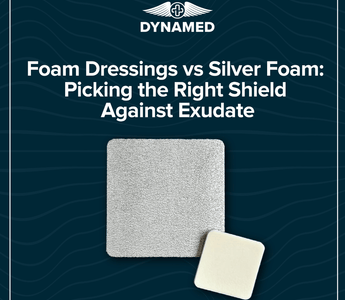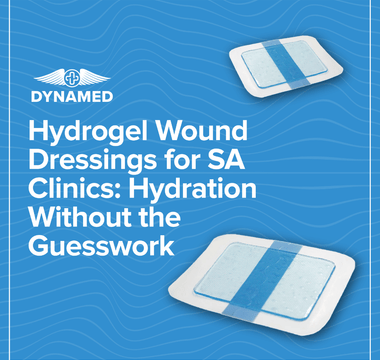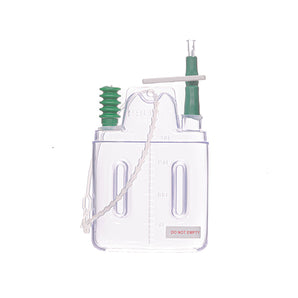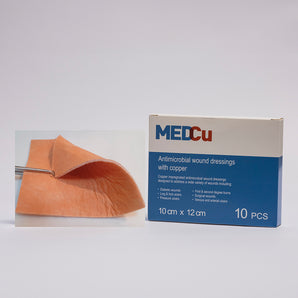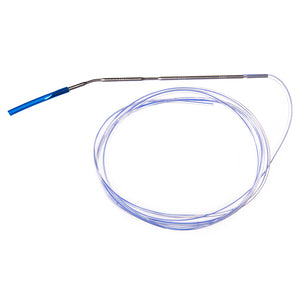Introduction
Exudate control is one of the most important aspects of wound healing. Too much fluid slows recovery, risks infection, and damages surrounding skin. Foam wound dressings are a trusted choice in South Africa’s hospitals and clinics because of their high absorbency and patient comfort. But when infection risk is high, silver foam dressings can offer an extra layer of protection. This guide helps clinicians and procurement managers decide when to use plain foam and when silver foam is the smarter choice.
Key Points (Quick Takeaways):
-
Foam wound dressings absorb exudate, protect fragile tissue, and provide cushioning.
-
Silver foam dressings combine absorption with antimicrobial protection.
-
Foams are best for surgical wounds, pressure ulcers, and moderately exuding wounds.
-
Silver foams are ideal for infected or high-risk wounds.
- Stocking both options ensures South African hospitals and clinics can meet diverse patient needs.
Foam Wound Dressings Explained
Foam dressings are made from absorbent polyurethane that can hold moderate to heavy exudate. They are breathable, non-adhesive (unless designed with adhesive borders), and comfortable for patients.
Benefits of Foam Dressings
-
High absorbency for exudate control.
-
Provide thermal insulation and cushioning.
-
Flexible sizes for surgical incisions and ulcers.
- Can stay in place for several days, reducing dressing change frequency.
Silver Foam Dressings: When Extra Protection Counts
Silver foam dressings contain ionic silver, which is slowly released into the wound bed to kill bacteria. They combine the absorption of foam with the infection-control benefits of silver.
Why Silver Matters
-
Effective against a wide range of bacteria.
-
Helps reduce bioburden in chronic or contaminated wounds.
-
Especially useful in high-risk hospital wards and surgical settings.
Situations Where Silver Foam Shines
-
Burns with infection risk.
-
Pressure ulcers with colonisation.
- Post-surgical wounds in immunocompromised patients.
Comparing Foam and Silver Foam
Foam vs Silver Foam: Key Differences
-
Foam: Absorption and comfort; best for exudate control without infection risk.
-
Silver Foam: Same absorption but adds antimicrobial protection.
Foam vs Silver Foam: Cost Considerations
Plain foam is typically cheaper, making it the better choice for routine cases. Silver foam is more expensive but cost-effective when infection prevention avoids longer hospital stays.
Foam vs Silver Foam: Wear Time
Both can remain in place for several days, but clinical judgment should guide change frequency based on wound condition.
Choosing the Right Dressing in South Africa
Clinicians in South Africa face unique challenges, from high patient loads to limited access in rural clinics. Stocking both foam and silver foam dressings ensures:
-
Flexibility for managing both routine and complex wounds.
-
Cost control by reserving silver foam for high-risk patients.
-
Improved outcomes in settings where infection rates are a concern.
Practical Procurement Tips
-
Ensure suppliers are ISO 13485 certified for safety and compliance.
-
Buy in a range of sizes to reduce wastage.
-
Balance orders between foam and silver foam to meet varying clinical demands.
-
Use consignment stock where available to reduce upfront costs.
Conclusion
Foam wound dressings are reliable workhorses for exudate management, while silver foam dressings bring extra infection control when it matters most. In South African hospitals and clinics, having both in stock is the safest way to deliver cost-effective, patient-focused care. The right shield against exudate depends on the wound, and with both foam and silver foam available, clinicians can make the best choice every time.
Dynamed Pharmaceuticals
Phone: 0861 00 00 43
Website: dynamed.co.za
Email (Sales): sales@dynamed.co.za
Email (Info): info@dynamed.co.za
Google Maps: Find us here
FAQs
1. What is a foam wound dressing used for?
Foam dressings are used to absorb moderate to heavy exudate, protect fragile tissue, and provide cushioning for wounds such as ulcers and surgical incisions.
2. When should silver foam dressings be used?
They are best for wounds with high infection risk, such as burns, pressure ulcers, and post-surgical wounds.
3. How long can foam dressings stay on?
Foam dressings can usually stay in place for 3–7 days, depending on exudate levels and wound condition.
4. Are silver dressings safe for all patients?
Silver is generally safe, but caution should be taken with neonates and patients with known sensitivities. Always follow clinical guidelines.
5. Which is more cost-effective: foam or silver foam?
Foam is more affordable for routine cases. Silver foam is cost-effective when infection prevention reduces longer treatment times.
6. Where can I source foam and silver foam dressings in South Africa?
Local ISO-certified suppliers like Dynamed provide both options, ensuring reliable supply to hospitals, clinics, pharmacies, and distributors across the SADC region.

